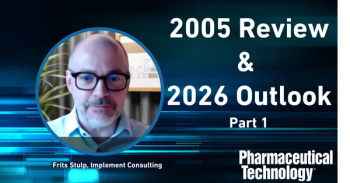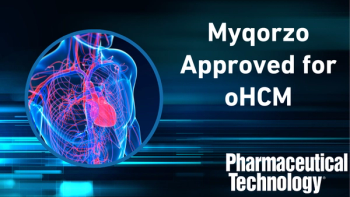
- Pharmaceutical Technology-09-02-2012
- Volume 36
- Issue 9
Classifying Rouge Helps Define Remediation Procedures
Identifying and classifying rouge can help to determine CAPA.
Rouge is a common phenomenon in water-for-injection (WFI) and clean-steam systems and can often be found in equipment and piping connected to these systems. The root cause of rouging in high-grade stainless steel equipment is a contentious issue among pharmaceutical engineers and definitions of rouge range widely. What is generally agreed is that rouge is a form of surface corrosion that can form on stainless steel when exposed to high-purity water at elevated temperatures. This corrosion can manifest itself as a glazed, immobile discoloration or as a powdery reddish deposit (1).
Opinions on how to investigate and assess the impact of rouge and choose appropriate corrective and preventive actions (CAPA) are diverse and sometimes conflicting. Essentially, however, the quality assurance (QA) specialist or product manager must assure that the equipment is not reactive, additive, or absorptive, as per 21 CFR 211.65(a) (2). Questions to investigate may include:
- Is this rouged metal a good spot for biofilm development?
- Is iron oxide particulate present in the final solution?
- Could iron oxide affect the stability or effectiveness of the product?
Investigating impact
The team investigating rouge can collect and analyze existing data from their process. For example, surface roughness (Ra) would have been measured during installation qualification of the WFI still and piping. Further data would be available from the operational and performance qualifications on clean-in-place system tanks. The team can also analyze water testing and monitoring data over the system lifetime, and look at the impurity profile for products made in these tanks or with this WFI. Using quality systems and release criteria from years of operation, investigators have many of the tools needed to assess any potential effect to the product or intermediates from the observed rouge.
Rouging on a stainless-steel tank. (IMAGES COURTESY OF THE AUTHOR)
Investigators should first determine whether the observed problem is indeed rouge and not product residue or another type of contamination. If a swab from the surface comes away with reddish-brown residue, the residue can be sent to a laboratory that performs Fourier transform infrared spectroscopy (FTIR) analysis. This analysis will show the presence of iron oxide from a sample of rouge. Close visual inspection should also be used to assure that there is no pitting or flaking in the affected area, which would indicate an advanced level of corrosion beyond the scope of rouging.
Rouging on a water-for-injection pump impeller.
If rouge is present, the most critical determination is whether the rouge is additive to the process or not. Is the rouge firmly adhered to the surface of the equipment or could it instead come off into the process stream either slowly or as a result of water hammer or another shock? If the rouge is glazed and smooth in appearance and does not wipe off or is not found on downstream filters or gaskets, then it would be safe to conclude that it is not an additive problem. A second critical determination is whether the rouged location is cleanable. If it is not cleanable, it could be a spot where biofilm could develop, which could impact the process. One should assess the cleanability of the rouged area by comparing the surface roughness to areas with no rouge in the same tank or piece of equipment. A review of any cleaning or monitoring data from the system can be used to corroborate whether the rouge is additive and cleanable.
If, on the other hand, the rouge wipes off easily on a swab or a glove, or is found downstream on filters or gaskets, then it can also be found in the WFI or process stream. The equipment can indeed be said to be "additive, reactive, or absorptive," which is a violation of 21 CFR 211.65(a). In this case, one must investigate the impact of iron oxide particulate in the WFI or other process fluids.
Factors such as dilution or downstream filtration may contribute to an impact assessment. The engineering team can calculate the surface area of equipment effected by rouge and the amount of rouge particulate possible in the system. This calculation may reveal that the dilution factor is so small that no further investigation is needed. WFI added to any critical downstream process will most likely have a sterile filter in line as well. Although rouge particulate may be as small as 10 nm, particulate normally clumps into larger sizes, and is trapped in sterile filters (3). Conductivity, which is a monitored criteria in WFI loops, is not elevated by rouge because the volume and usage of the WFI storage and distribution system is too great in comparison to the volume of iron oxide particulate that could be formed and released into the circulating WFI in a measurable amount.
Using SOPs to deal with rouge
Rouge is often found during routine maintenance or visual inspections performed after cleaning. An inspection team needs a clear definition of how to identify and document rouge and of whether this rouge has the potential to impact product quality or not. These definitions should be provided in a standard operating procedure (SOP) to drive consistency, not only in reporting, but in decisions to tag-out affected equipment, sample requirements, and in re-cleaning and investigative procedures to follow. An SOP will give consistency not only to operators, but to QA and engineering activities as well. An SOP is a proactive way the QA group can demonstrate the control and critical thinking needed to properly mitigate the impact of rouging on batches of drug product. Performance of a risk assessment per ICH Q9 is a robust method of creating such an SOP.
An SOP should provide a simple, clear method of identifying, classifying, and determining the path forward. The procedure should be pragmatic, and instructions for proceeding with maintenance and remediation or with processing should be clear for anyone who may find visual anomalies on product contact equipment surfaces during the course of their work.
Different companies use numerous classifications of rouge, and many do nothing to help the operator or mechanic on the floor define the problem or determine if it really is a problem. Saying that the rouge is "shiny and black" or "a glazed purple" may help to identify the visual anomaly as rouge, but it does nothing to say if the material is additive to the process, or if the spot of rouge on the side of the tank is rougher than the shiny stainless around the spot, which would indicate a more difficult cleaning location. An SOP should use simple categories: one category should be for rouge that can impact a process and requires an investigation and another category for rouge that does not. The SOP should include steps to determine the category using visual criteria, roughness measuring, swabbing (i.e., a "wipe test"), or other straightforward methodology to see whether the rouge is mobile or fixed and if it is cleanable. If the rouge is not additive, reactive, or absorptive, and does not affect cleanability or operation, then it should be documented and processing should proceed. If the rouge is additive or difficult to clean, it will impact the process and requires an investigation.
As-found conditions of tanks or valves that are opened only once each year or two should be documented and photographed. Any problem found in such cases will impact every lot produced since the last inspection, so good documentation and rapid assessment is crucial.
Good documentation practices that go along with routine maintenance or cleaning inspections will help the quality team build a history of equipment or systems as well, allowing comparison over time and providing a window for product impact assessment.
An SOP can give the team clear guidance to perform their jobs correctly without outside assistance. The team should be trained to document, evaluate, and then proceed with their sample collection or tag-out procedures as defined by the SOP.
Conclusion
Rouge has long been regularly seen in pharmaceutical plants, but very little consensus has been reached on pragmatic QA solutions. QA personnel are not expected to be experts in the metallurgy of stainless steel, but must assure that equipment is in good order, cleanable, and not contributing to contamination of products. Personnel should be able to assemble the data necessary to assure this, quantify and qualify the risk based on knowledge of the products and equipment, and document the investigation in a logical way. Implementing clear procedures will ensure that rouging does not paralyze operations and lot-release schedules.
John Anderson is validation manager at Lonza in Visp, Switzerland,
References
1. R.W. Revie and H.H. Uhlig, "Iron and Steel," in Corrosion and Corrosion Control: An Introduction to Corrosion Science and Engineering, (John Wiley & Sons, Inc., Hoboken, NJ, 4th ed., 2008) pp. 115–148.
2. Code of Federal Regulations, Title 21, Food and Drugs (Government Printing Office, Washington, DC), Part 211.65(a)
3. T. Mathisen and J. Frantsen, Rouging of Stainless Steel in WFI Systems, Examples and Present Understandings, (Force Technology, Brondby, Denmark, 2007).
Articles in this issue
over 13 years ago
Pharmaceutical Technology, September 2012 Issue (PDF)over 13 years ago
Formulation Development Forum: Hydrogels for Long-Sustained Releaseover 13 years ago
Regulation and Complianceover 13 years ago
2,4,6-Tribromoanisole and 2,4,6-Trichloroanisoleover 13 years ago
Early Development GMPs for Stability (Part IV)over 13 years ago
Joint Regulatory Conferences: The Ultimate Connectionover 13 years ago
Future Innovation in Drug Deliveryover 13 years ago
Temperature-Controlled Shippersover 13 years ago
Technology Transfer: Protecting the True Public Interestover 13 years ago
Europe Hones in on Antitrust ViolationsNewsletter
Get the essential updates shaping the future of pharma manufacturing and compliance—subscribe today to Pharmaceutical Technology and never miss a breakthrough.




